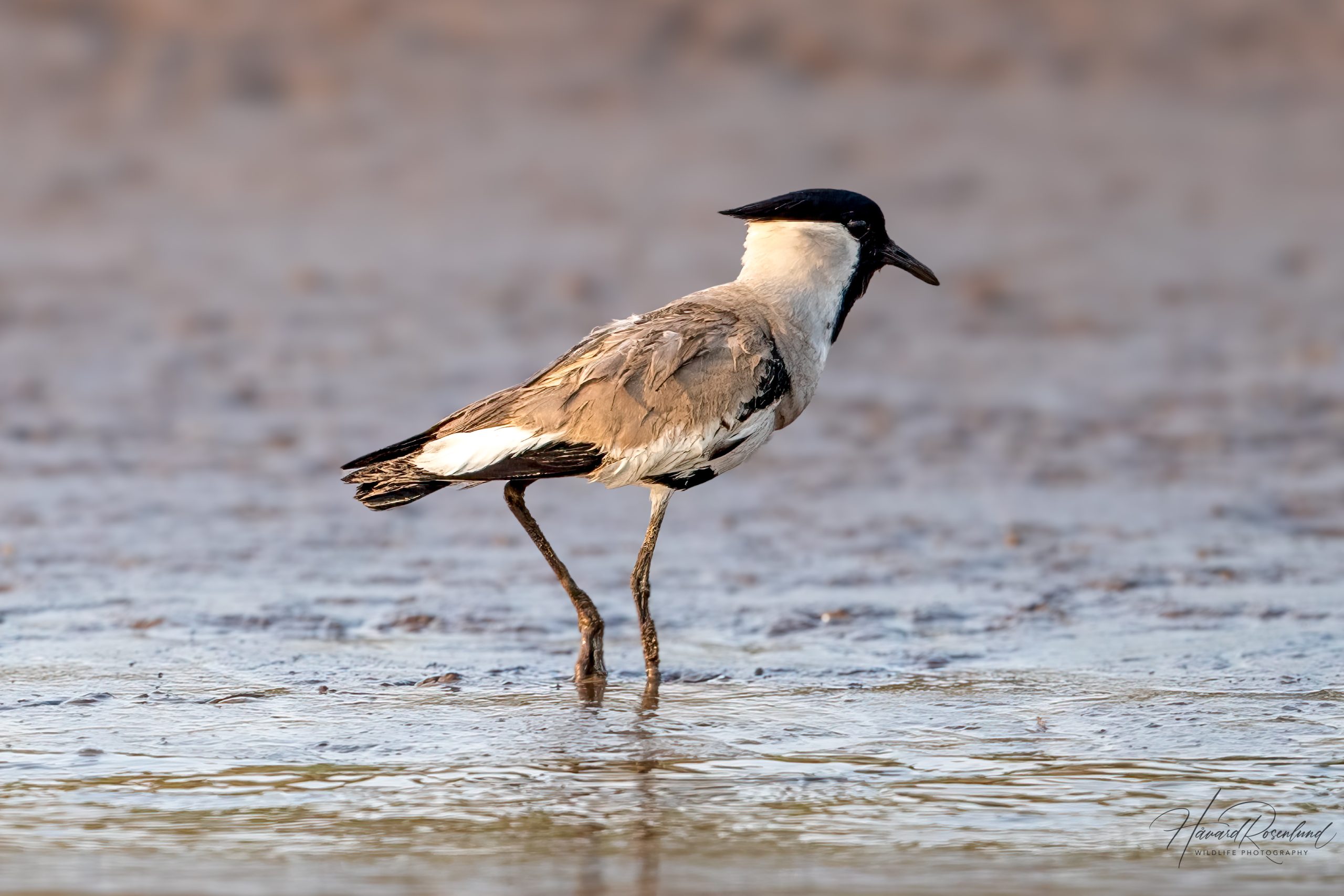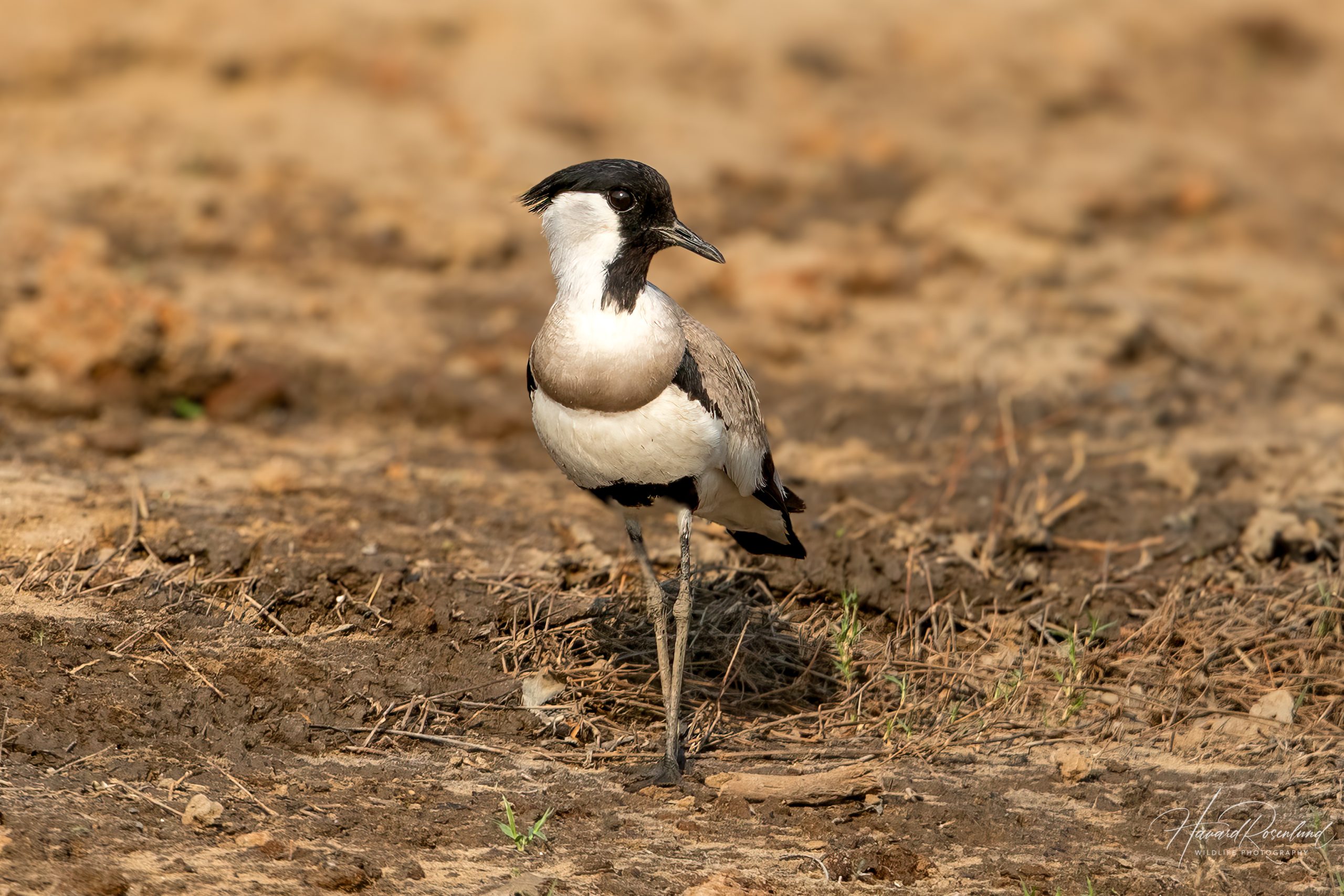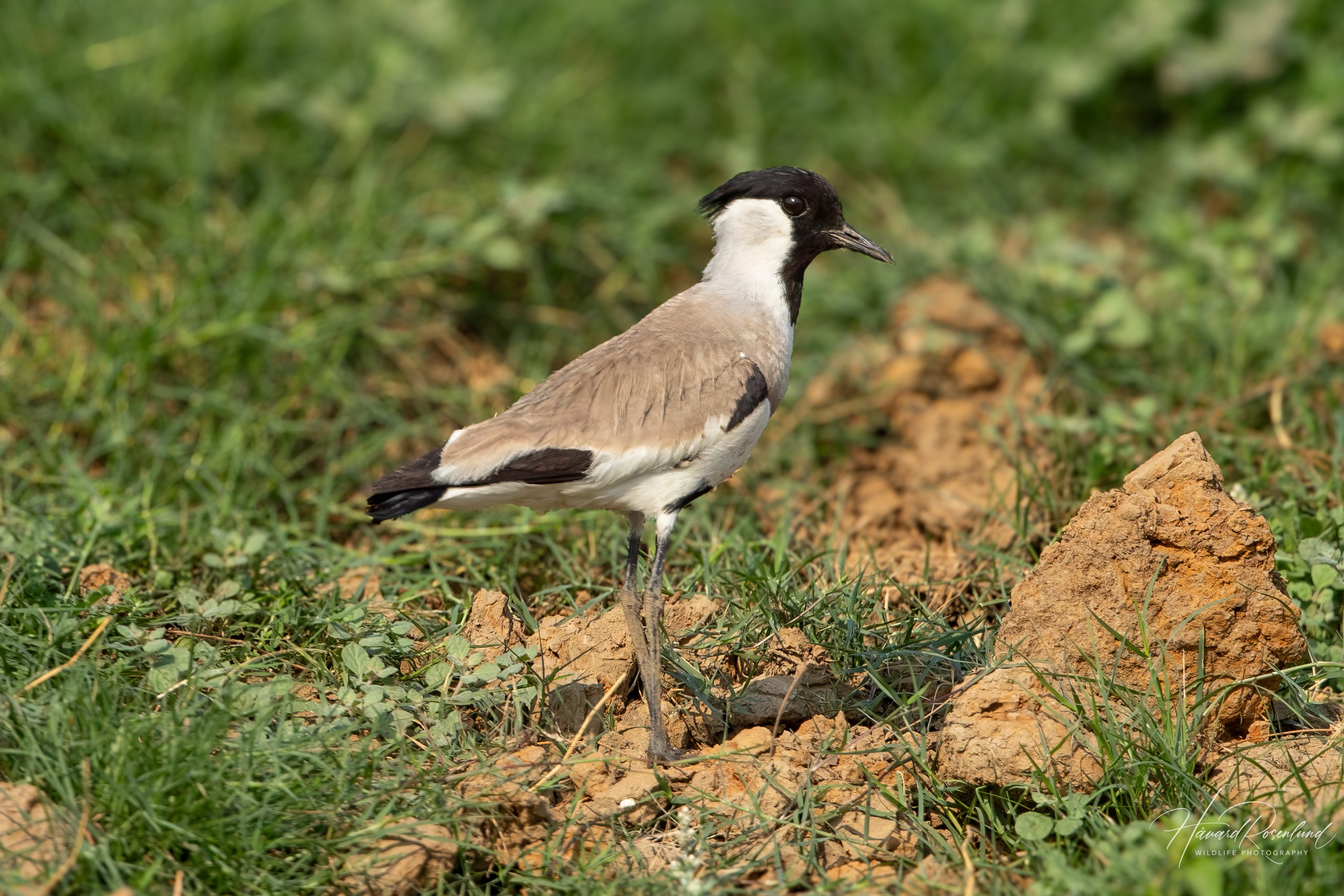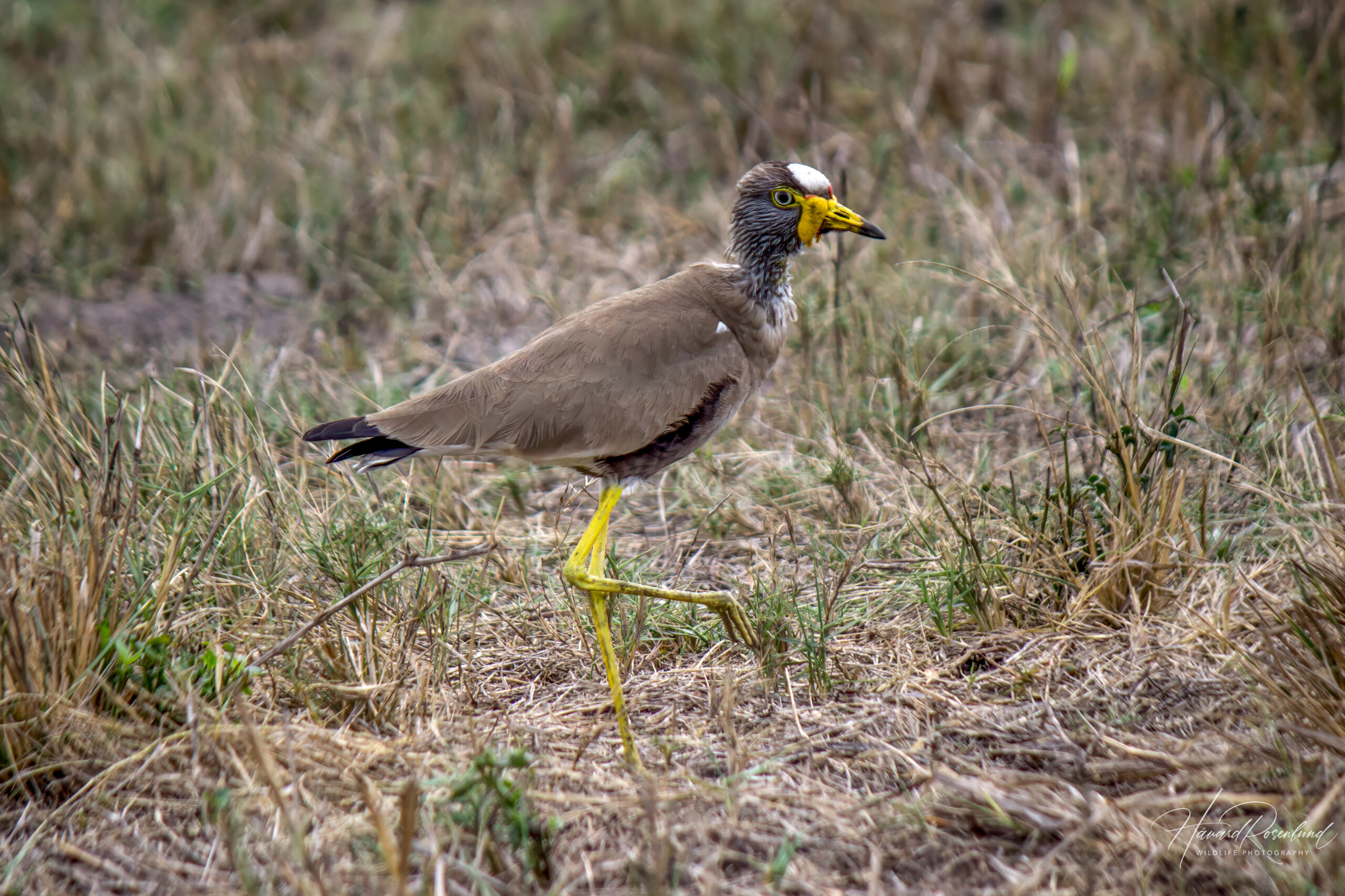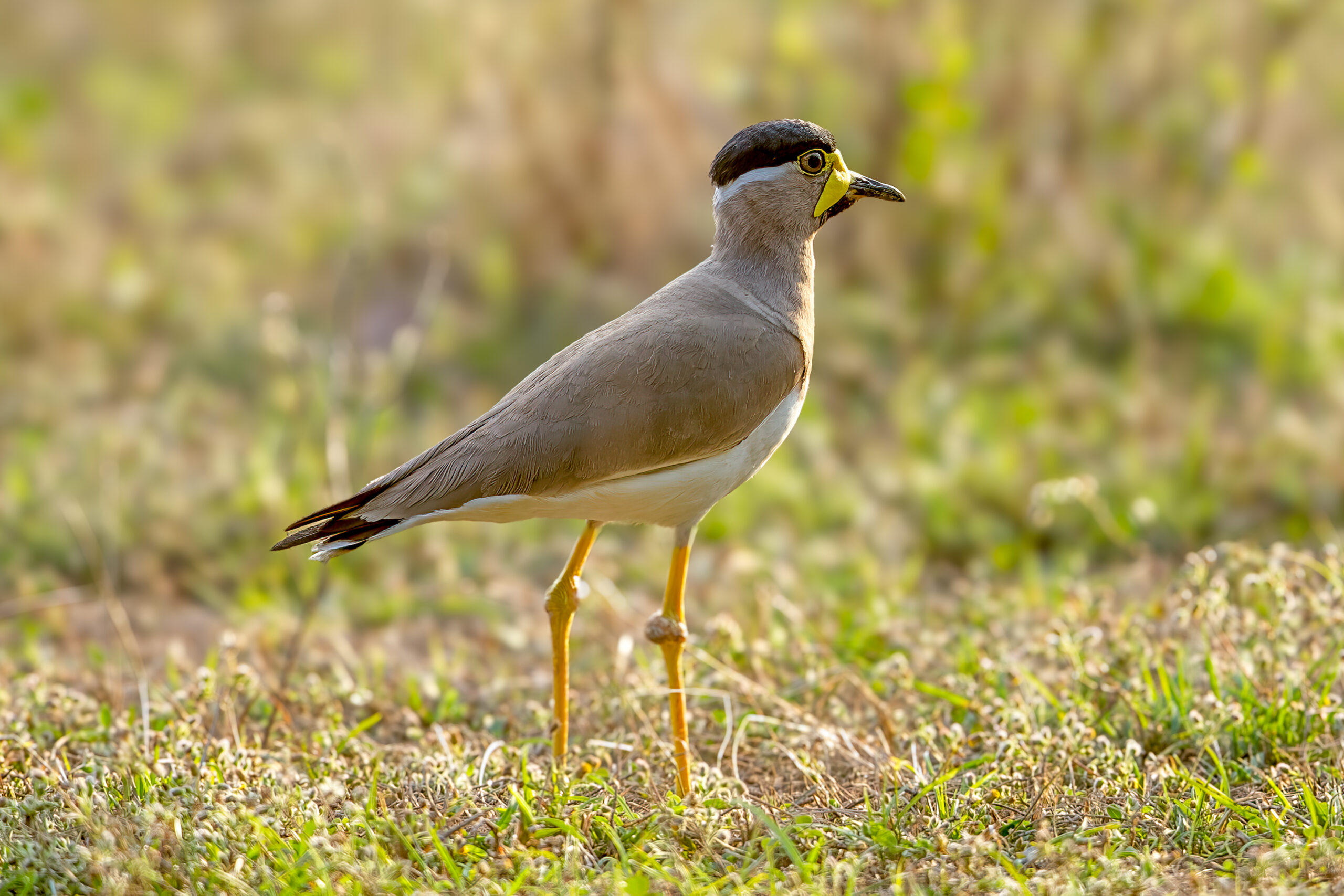Description
The river lapwing (Vanellus duvaucelii) is a wading bird found primarily in South and Southeast Asia. Its range extends primarily from northern India and Nepal to Myanmar, Thailand, Cambodia, Laos, and Vietnam. This medium-sized lapwing is approximately 29-32 cm (11.4-12.6 in) in length, with a wingspan of about 75-85 cm (29-33 in). It is characterized by its pale brownish-grey body, striking black crest, and a dark brown band running across its breast. The face, throat and tail are also black, while the belly and undertail coverts are white. The wings are broad and pointed, displaying a bold white wing bar during flight, which contrasts with the black flight feathers.
Diet & habitat
The river lapwing is typically found along the banks of rivers, large streams, and sandy or gravelly islands. It prefers open, flat areas near water, where it can easily spot potential predators and forage for food. Occasionally, it can be found in agricultural fields near water bodies, especially during the dry season.
Its diet primarily consists of insects, small invertebrates, and occasionally small fish. The river lapwing is an opportunistic feeder, often seen walking slowly along the water’s edge, pecking at prey items it encounters. It uses its sharp bill to probe the ground or sand for hidden invertebrates. During the breeding season, when it is more territorial, the river lapwing may be observed chasing away other birds from its feeding grounds.
Nesting
The breeding season of the river lapwing typically occurs from March to June, coinciding with the dry season when water levels are lower. They nest on sandy or gravelly banks, creating a simple scrape in the ground where the female lays 2-4 eggs. The eggs are well-camouflaged, blending in with the surrounding substrate to avoid detection by predators. Both parents share incubation duties, which lasts for about 25-30 days. The chicks are precocial, meaning they are born with their eyes open and are covered in downy feathers. They leave the nest within a few hours of hatching and are able to feed themselves almost immediately, although they remain under the watchful eyes of their parents. Fledging occurs around 35-40 days after hatching.
Status
The river lapwing is currently classified as near threatened on the IUCN Red List. The species is facing a decline in population due to habitat loss and degradation, primarily caused by dam construction, riverbank modification, and increased human activity along rivers. Additionally, disturbance during the breeding season and predation by domestic animals also contribute to its vulnerability. Conservation efforts are necessary to protect the remaining populations and their critical riverine habitats.




